Capt. Walter M. Schirra Jr. was best known to the public as the fun-loving prankster of The Right Stuff, and when he died on May 3, 2007 many began to realize that he was the only astronaut to fly in each of America’s first three manned space programs.
But before NASA, before the hot cars, even before the puns and “gotchas,” there was Wally Schirra, Weapon System— the self-proclaimed “finest hired killer in the U.S. Navy.”
The son of a World War I Army pilot, Wally was a product of the huge Annapolis class of 1946.
Among the 1,046 graduates, he stood in the top 20 percent. Thanks to the war, the class graduated a year early. Thus did Ensign Schirra set forth to conquer the Japanese empire in June 1945.
The task may have seemed daunting, though Wally rose to the challenge. As he told it: “Four significant events occurred in the western Pacific in August 1945. In chronological order they were the A-bombs on Hiroshima and Nagasaki, my arrival in the theater and Japan’s surrender.”
He acknowledged that the correlation among those events might be open to interpretation, but it all seemed logical to a 23-year-old from New Jersey.
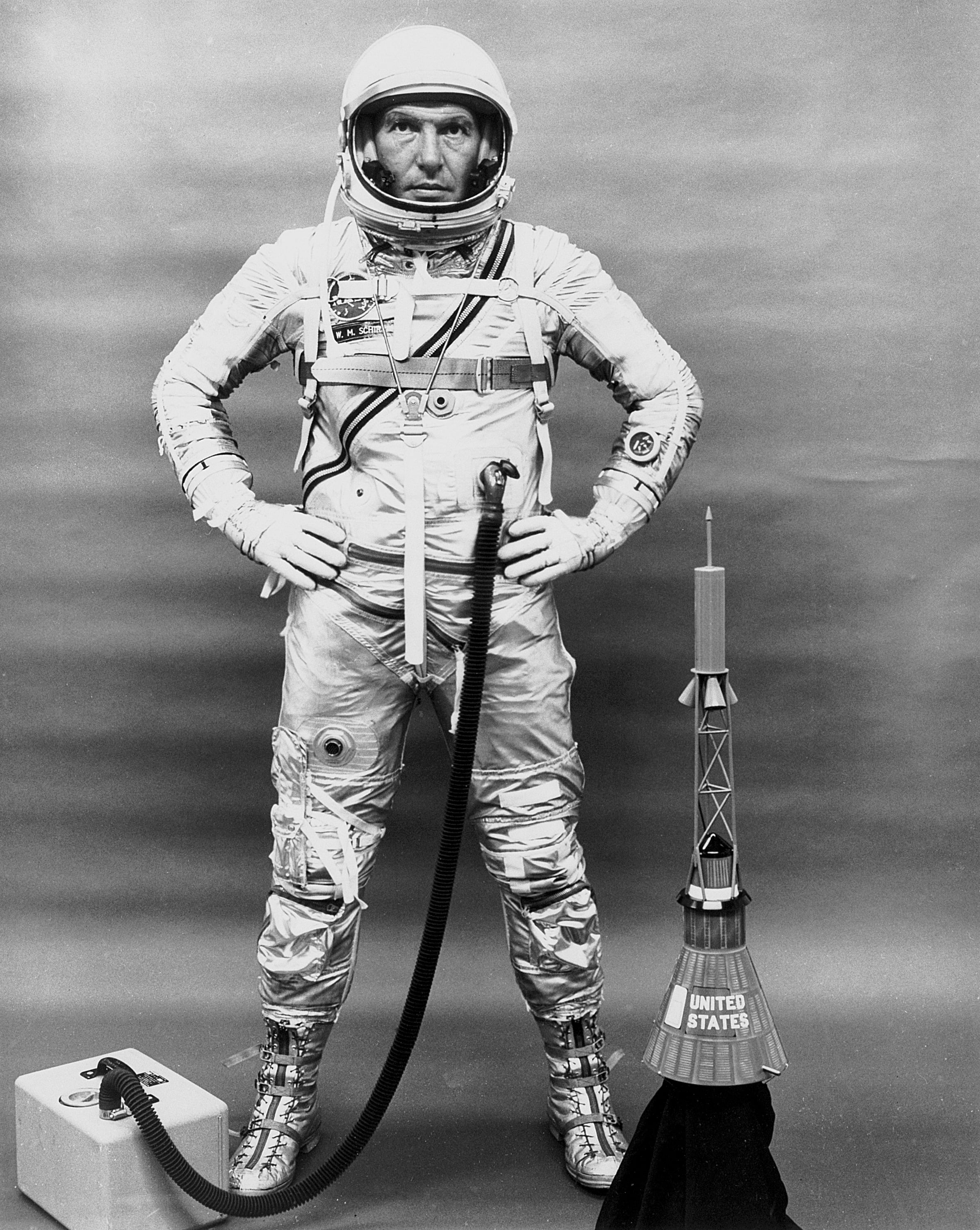
Ordered to the large cruiser Alaska, Wally reported at Okinawa and began his naval career as a turret officer. But while mastering firing 12-inch guns, he often cocked an eye skyward.
Approaching Pearl Harbor, four F8F-1 Bearcats buzzed the ship. Wally was already primed for aviation, and that impromptu airshow proved to be a turning point.
“The emotions I felt watching those little blue bumblebees almost humbled my pride in the sleek battle cruiser and began my transition from ‘blackshoe’ to ‘brownshoe,’” he said.
By early 1947, Wally was bouncing a Stearman N2S-5 at Grand Prairie, Texas.
His severest critic was Jo, his bride of one year. But eventually her faith and Wally’s tenacity got the job done: carrier qualifying aboard the Wright at Corpus Christi, then fighter transition in Florida.
After that it was on to the fleet — and Bearcats.
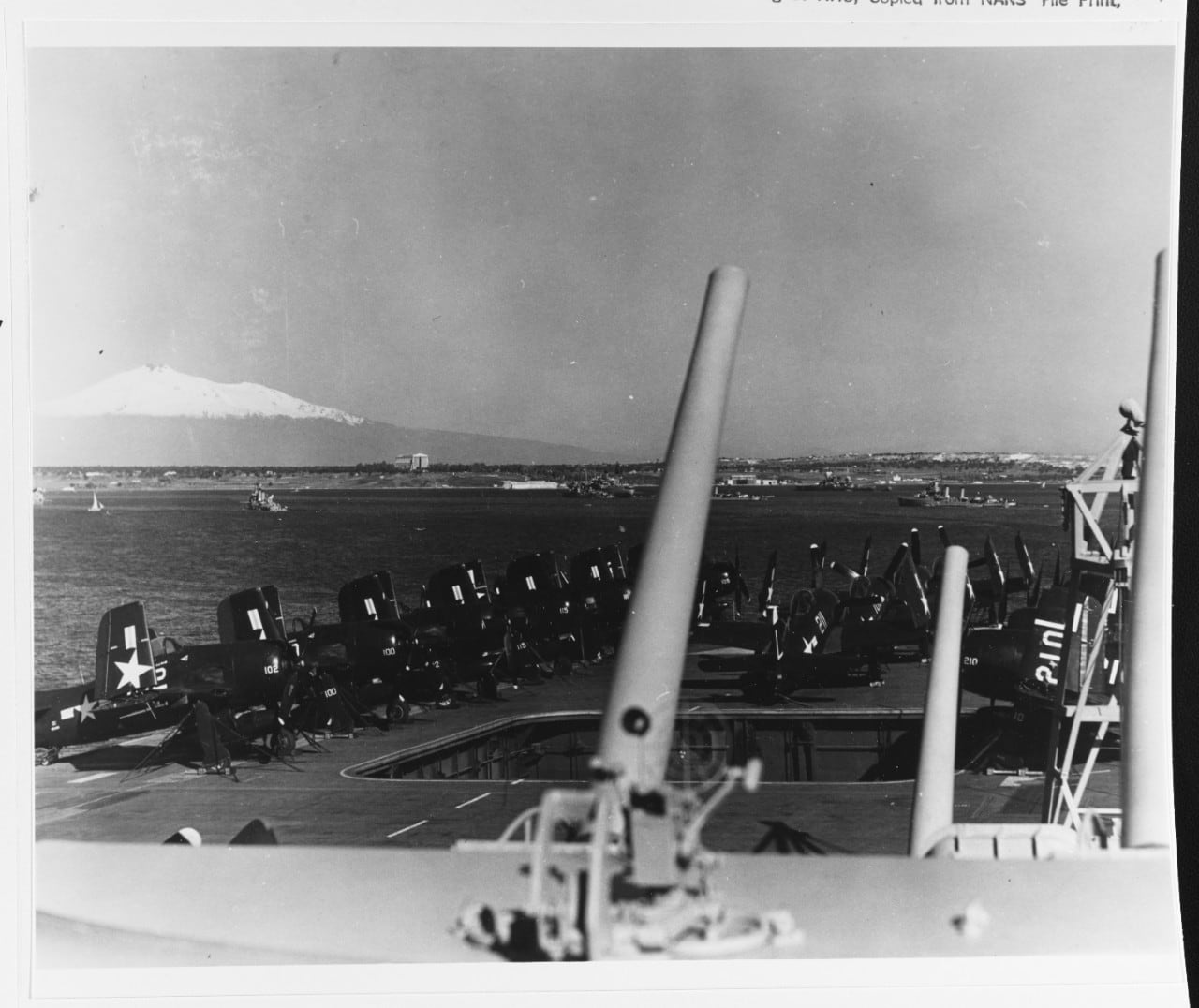
In the summer of 1948, the Schirras arrived at Naval Air Station Quonset Point, Rhode Island, where Wally reported to Fighter Squadron 7 with all of 300 hours in his logbook.
When he met his CO, Lt. Cmdr. Armistead B. Smith III, at the officers’ club, the double ace and Southern gentleman was sipping a martini — while standing on his head.
Years later Wally cited Chick Smith’s negative-gravity stunt to skeptical medics concerned about drinking in zero G.
Wally dived into a passionate love affair with the Bearcat.
“It was the closest thing to strapping on a pair of angel wings,” he recalled. “The cockpit fit like a well-tailored glove, with the canopy rails rubbing your shoulders. It had everything a fighter jock could want — speed, maneuverability and an eye-watering rate of climb. As far as I’m concerned, it was the last of the sports cars.”
Air Group Seven cruised to the North Atlantic and Mediterranean, and Schirra got the aircraft carrier Philippine Sea’s 15,000th-landing cake.
But it was a hard time for the Navy, owing to the Truman administration’s Army bias.
Wally’s squadron, redesignated VF-71, was reduced to mooching fuel from Quonset Point’s P2V Neptune squadrons.
But things improved. In 1949 Wally checked out in jets, borrowing an Air Force P-80, and eventually VF-71 received F9F-2 Panthers.
Air Group Seven was back in the Med in June 1950, when interesting things occurred in Korea. Suddenly Navy Weapon System Schirra was in the wrong place at the right time.
Back at Quonset Point, Wally presented himself as a jet-qualified aviator available for Air Force exchange duty.
It worked.
In January 1951, he joined the 154th Fighter-Bomber Squadron at Langley Air Force Base, where he learned he was the only pilot with single-seat jet time.
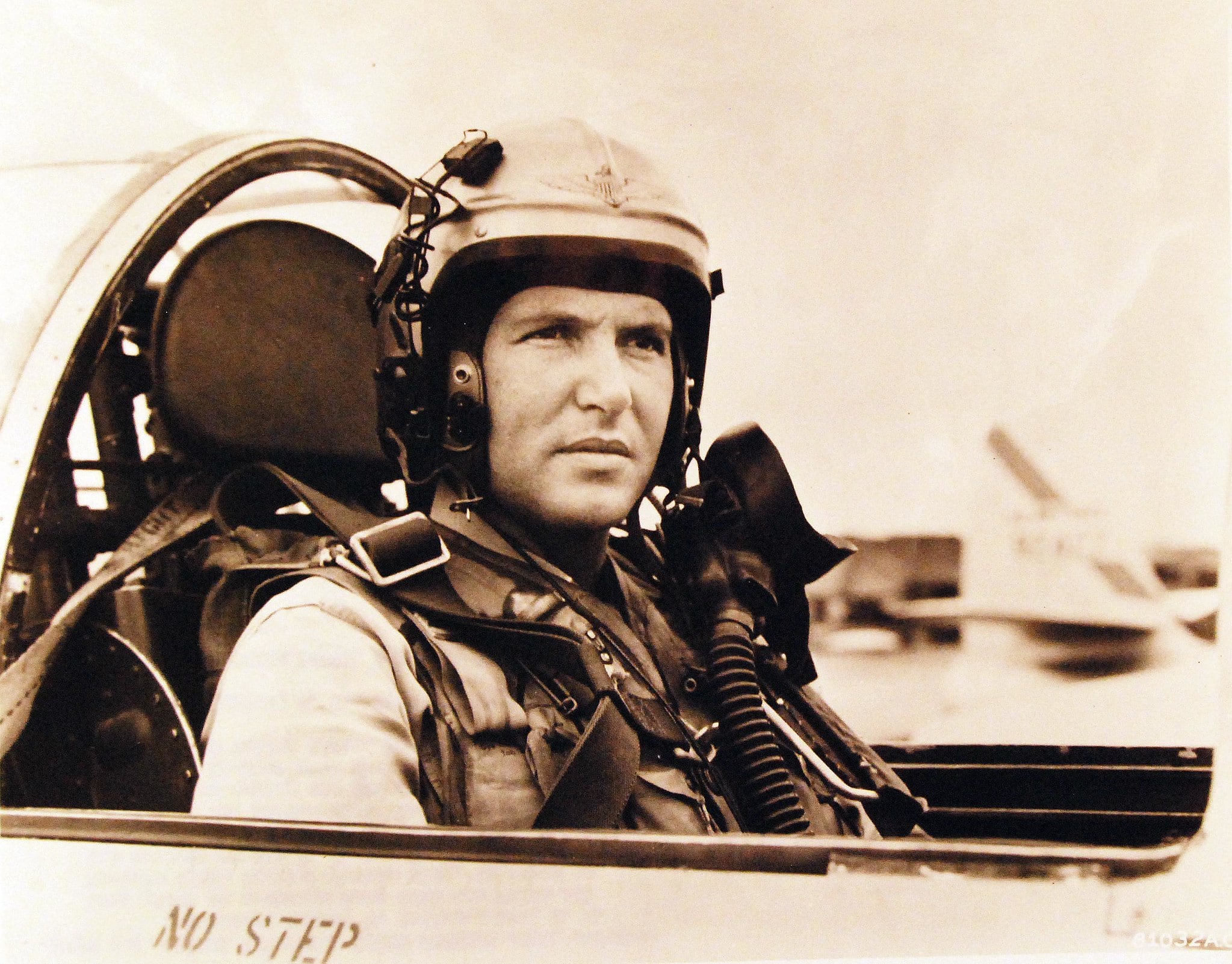
The Air Guardsmen were then trading their P-51Ds for F-84Es, and by June the unit was combat-ready in Japan.
It was a weird war for Wally Schirra — flying overloaded Thunderjets out of Itazuke by day, partying with his pals and his father by night.
The elder Schirra, a Fifth Air Force civil engineer, regaled the young studs with tales of the Great War. It was fun while it lasted, but the 154th moved on to K-2 at Taegu, South Korea, and the war turned serious.
Most of Wally’s missions were interdiction and close air support, though there was always the threat — or promise — of MiG engagements.
Flying south of the Yalu River, F-84 jocks could see Chinese airfields and often contrails where “bandit trains” formed up. Wally’s flight was bounced a couple of times and got away clean — the Navy’s Thach Weave worked with Air Force jets.
During an October 1951 B-29 escort mission, when an estimated 150 bandits tied into 89 Air Force fighters, a 20-minute running battle developed in which three bombers were knocked down and perhaps six MiGs.
One of those MiGs was credited to Schirra.
While with the Air Force, Wally formulated Schirra’s Rules of War: No. 1, use bigger guns, preferably 20mm; No. 2, screw the rules of engagement; No. 3, develop air-to-air missiles; No. 4, you don’t always need radar if you know how to use your eyes.
After Korea, Wally yearned for test pilot school, but he received an equally good deal.
Assigned to the ordnance station at China Lake, California, he got the chance to fulfill his own rule No. 3 when Project Sidewinder came to fruition under Bill McLean.
“We fired Sidewinders off an AD-4 and later an F3D-1, and got it to work,” Wally recalled in 1993.
“Forty years later it’s still the best air to-air weapon ever developed, proving that simplicity beats sophistication every time.”
Following two years at China Lake, Wally drew orders to Naval Air Station Miramar. He sold his sand blasted Model A Ford to another junior officer, and the Schirras were off to San Diego.
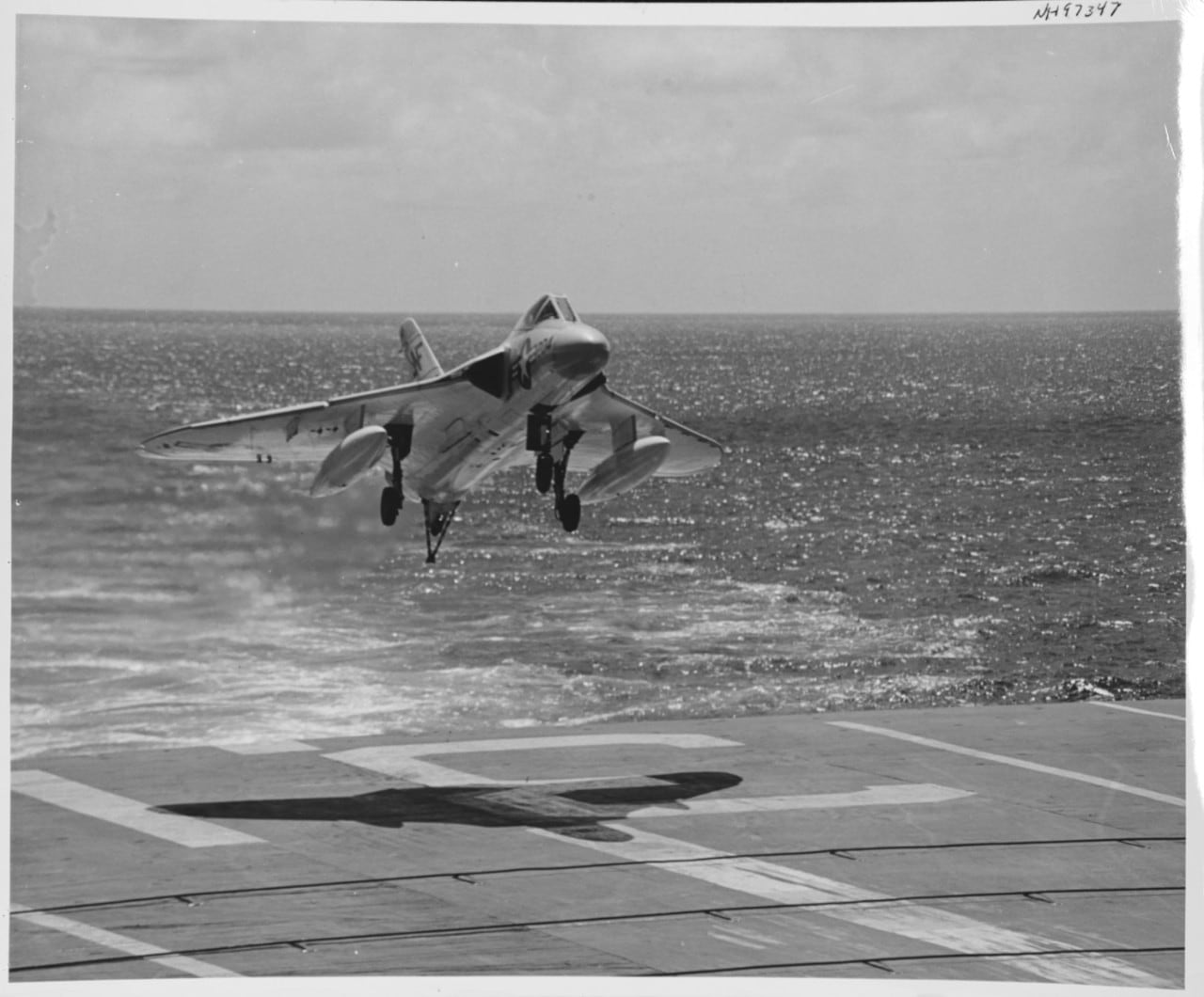
Project Cutlass involved a small team of pilots and technicians evaluating whether Vought’s futuristic F7U-3 was suitable for fleet use.
“The organization was unusual, but then the Cutlass was an unusual flying machine,“ Wally noted.
“It was the Navy’s first supersonic aircraft and first with afterburning engines. It was a tailless bird packing 20mm cannon and, gee whiz, the touted Sparrow radar-guided missile.”
The project team later became part of a training unit at Naval Air Station Moffett Field.
The growing Schirra family moved to the Bay Area, where Wally joined Cmdr. James D. “Jig Dog” Ramage’s Composite Squadron 3.
The West Coast jet transition unit had lots to offer, including FJ-3 Furies, F2H Banshees and Cutlasses.
“A radio call, ‘Diablo 35,’ meant someone was inbound over Mt. Diablo at 35,000 feet (plus or minus ten grand),” Wally recalled.
“Giant furballs were the norm — it was wonderful duty.”
He admitted that anybody flying that way today would go to Leavenworth for all the rules that were violated, broken, abused and otherwise spun, folded or mutilated.
At Moffett, Wally developed another aeronautical love affair, this time with the sporty little Douglas F4D-1 Skyray. It suited his dogfighting personality, just as the Bearcat had a decade before.
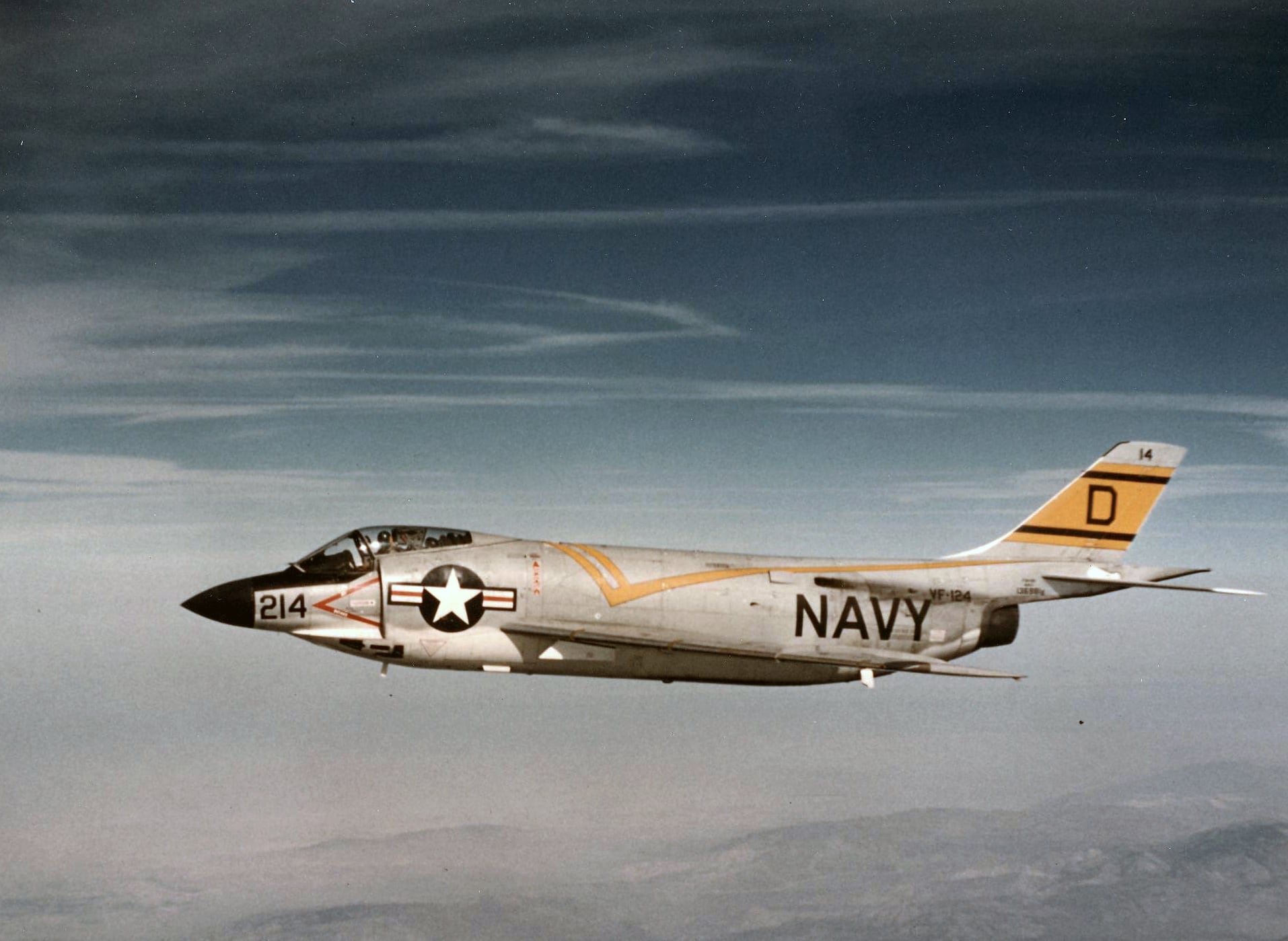
In 1956 Wally was forced into atonement for all his good deal assignments, fetching up in the underpowered, short-legged McDonnell F3H-2N.
The Demon squadron was VF-124, and upon completion of aircraft carrier Lexington’s 1957 cruise, Wally bagged his last trap.
He didn’t realize it at the time, as the cherished orders to Patuxent River were waiting.
Joining Test Pilot School Class 20, Wally knew the fun was over.
“Aside from the curriculum, the competition was deadly,” he said. “Jim Lovell was first in our class, and I tied Pete Conrad for second. Pete and I probably logged too much time water skiing while Jim worked harder.”
But their friendship brought unexpected dividends five years later.
Wally was the 13th naval aviator to fly the F4H-1 Phantom — his introduction to Mach 2 flight — and was assigned to Service Test at Pax River.
But he was soon ordered to a classified briefing at the Pentagon, where he learned about something called Project Mercury.
“At first I wasn’t interested in the space program,” Schirra said. “I was involved with the F4H and thought I could help make it a useful weapon, even without a gun. Besides, I was reluctant to chuck my Navy career.”
But he sought the counsel of former skippers Bob Elder and Don Shelton, and decided to give NASA a try.
“With my attitude, I was more of a half-ass-tronaut,” Wally joked.
He moved his family Langley Air Force Base in 1959, and the great adventure began.
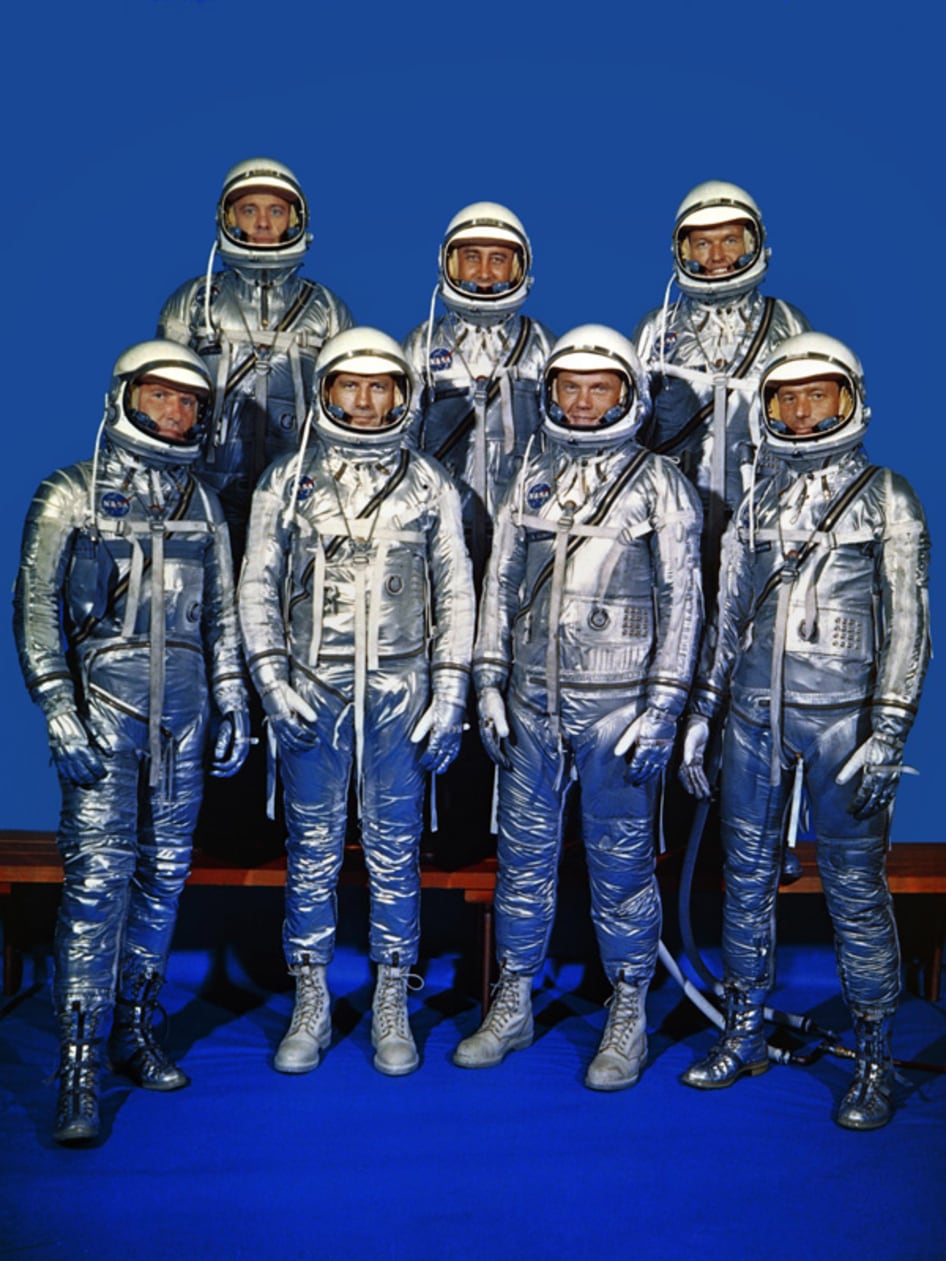
Since all seven Mercury astronauts were military test pilots, everybody had “a better way” to do things.
For example, an engineer invented a three-axis controller for the space capsule, but old habits died hard.
“I’ll never forget Deke Slayton saying he wasn’t going to give up his rudder pedals,” Wally said with a grin.
The pilots spent hundreds of hours in simulators, experimenting with the right feel and technique for controlling the spacecraft.
Wally summarized, “Years later my right wrist was still larger than my left.”
Sigma 7 lifted off from Cape Canaveral on October 3, 1962, the fifth manned Mercury flight and third orbital mission.
Lt. Cmdr. Schirra was cleared for six orbits 176 miles above Earth.
When Alan Shepard gave the word, Wally fired his retro rockets and made a “three-wire” landing just 4½ miles from the aircraft carrier Kearsarge.
His 10-hour flight had been nearly flawless.
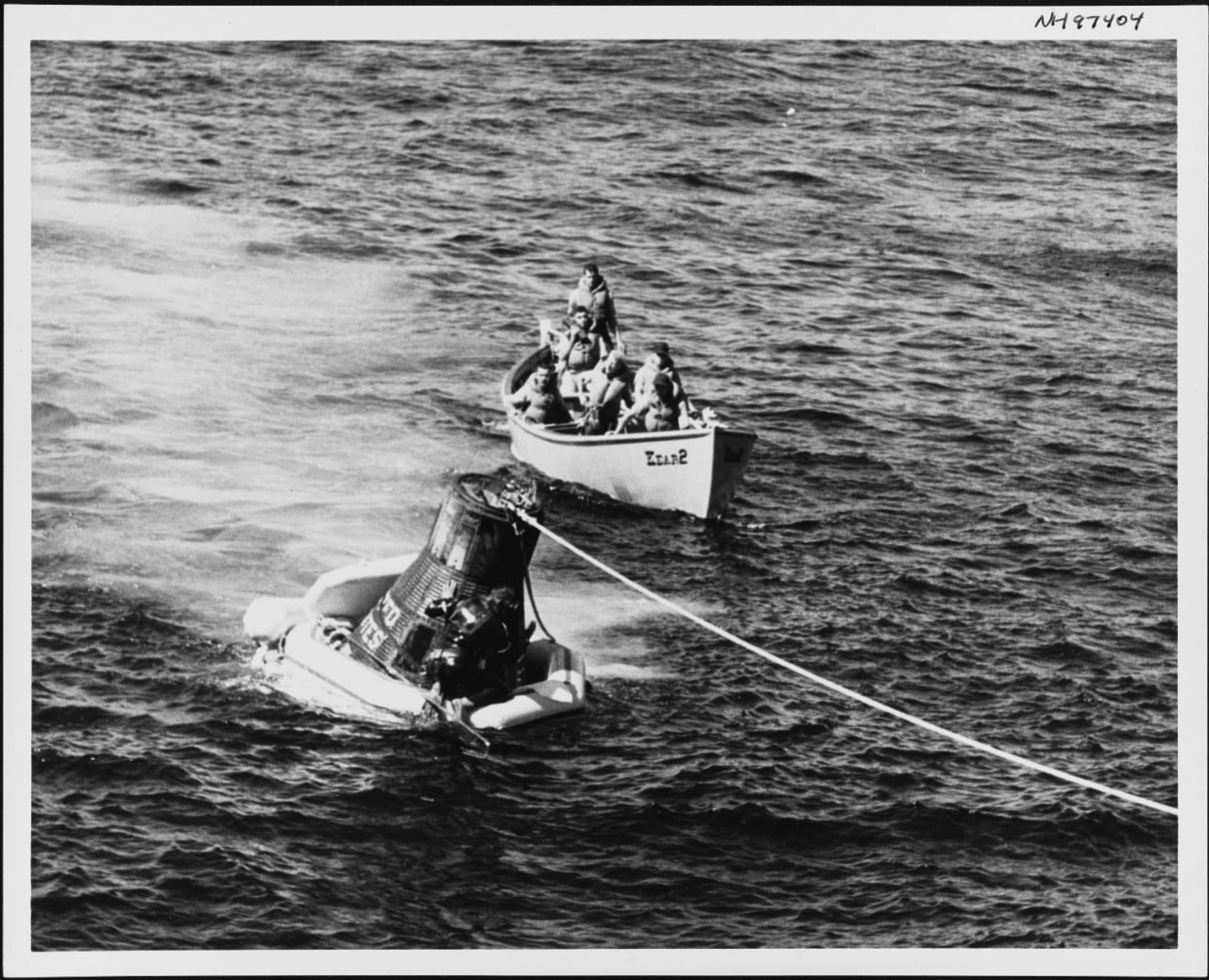
Next came Gemini, the more ambitious two-man program that began flying in 1965.
In December, Schirra and Tom Stafford’s Gemini 6 rendezvoused with Frank Borman and Jim Lovell’s Gemini 7.
Previous NASA gotchas had necessarily been limited to Earth, featuring fast cars, pet boa constrictors and a vicious fox-tail “mongoose” that Wally kept spring-loaded in a box.
But now the Army-Navy rivalry went orbital — Schirra, Stafford and Lovell were “Canoe U” grads, leaving Borman the lone West Pointer.
Easing alongside Gemini 7, Wally was prepared to flash a “Beat Army” sign to Borman.
“But Frank was quick,” Wally admitted. “Before my message could be read to the world, he said, ‘Schirra’s got a sign. It says Beat Navy!’”
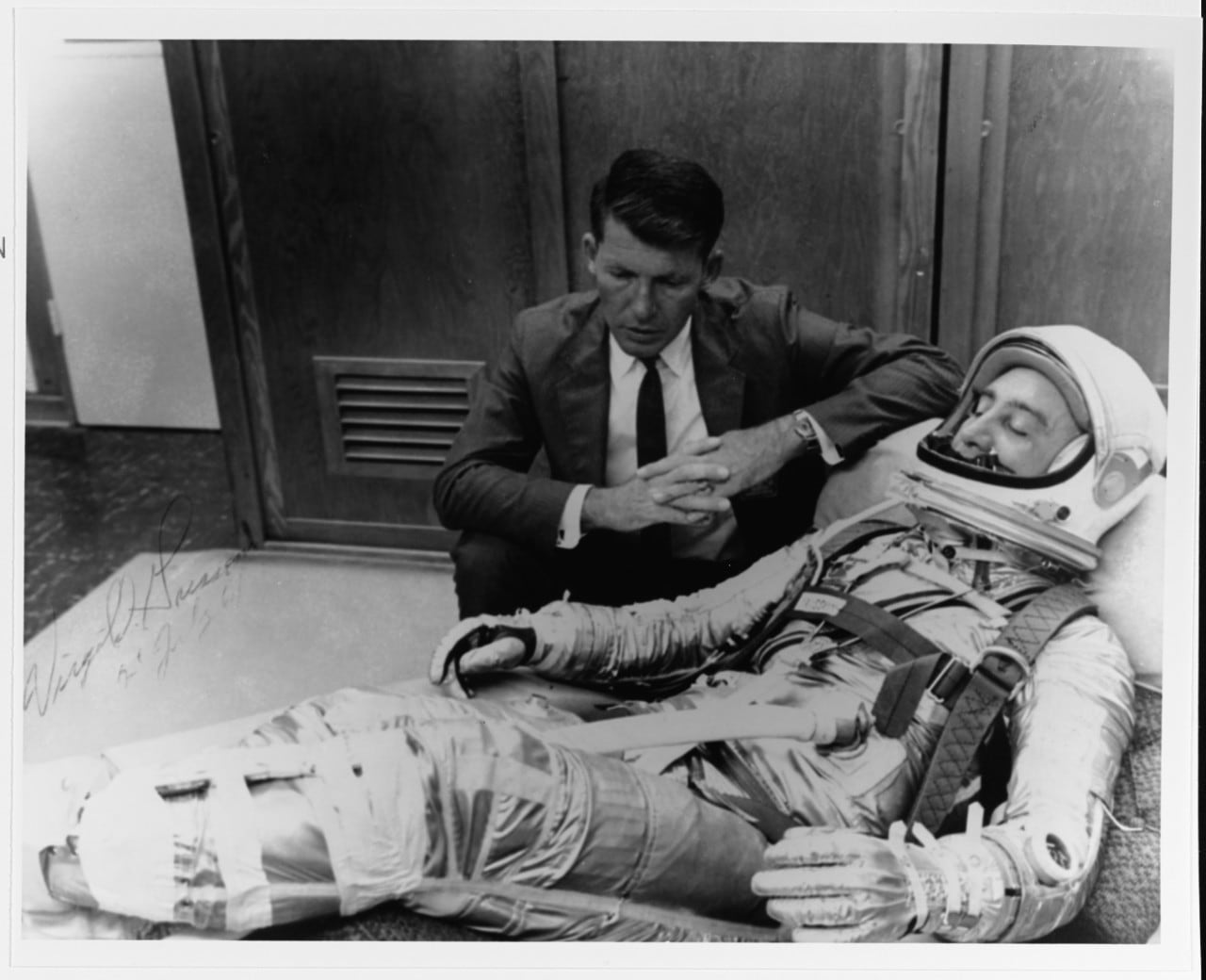
Apollo was the way to the moon, and the first two “block one” vehicles were to be commanded by Gus Grissom and Schirra.
But the program was shattered in early 1967 when Grissom, Ed White and Roger Chaffee died in a launchpad fire.
The flight schedule suffered accordingly, and Apollo 7 — the first manned flight in the program — didn’t go until October 11, 1968.
Wally, Don Eisele and Walt Cunningham spent 11 tedious days in orbit, monitoring systems and photographing Earth. Overall it was a dull, unrewarding mission for Wally.
When he splashed down, his resignation from NASA and the Navy was already in writing.
Some people thought Wally had two personalities. When the canopy closed or the hatch was sealed, he turned from cheerful, extroverted Wally into the dead-serious professional Cmdr. Schirra.
In truth his personal and professional personas were opposite sides of the same coin.
What set him apart is that he remained the good-natured kid from New Jersey who would do anything for a friend.
But he was always on the lookout for the next gotcha.
RELATED
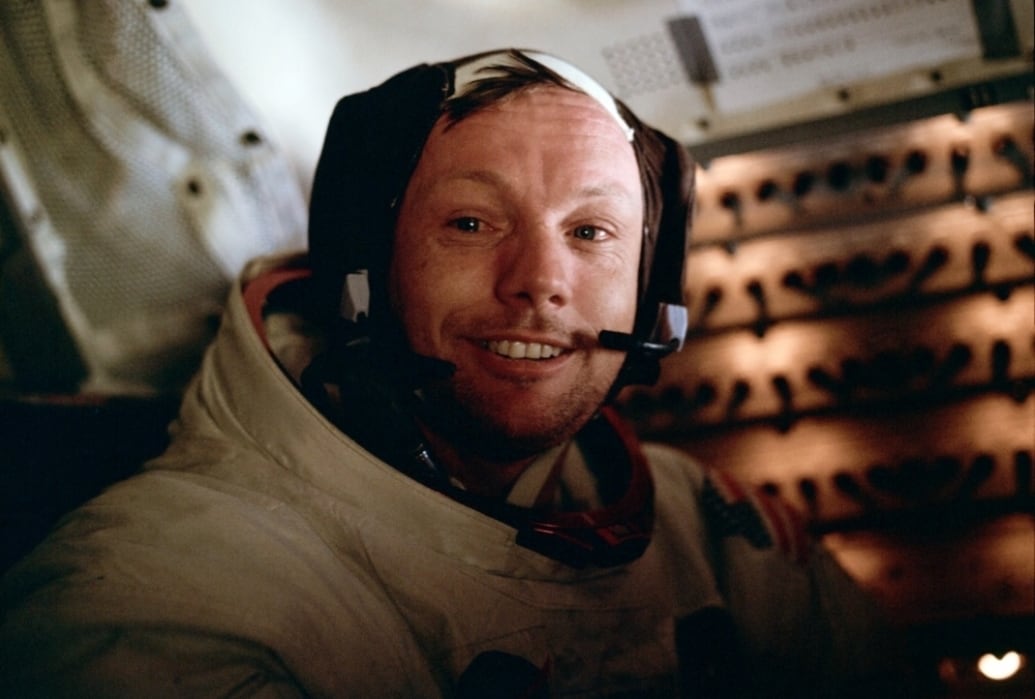
This story originally appeared in the March 2013 issue of Aviation History, a sister magazine of Navy Times. To subscribe, click here.





